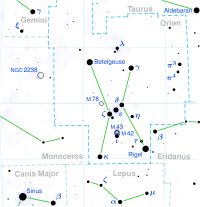
Photo from wikipedia
Using a model for the equation of state and composition of dense matter and the magnitude of singlet proton superconductivity and triplet neutron superfluidity, we perform the first simultaneous fit… Click to show full abstract
Using a model for the equation of state and composition of dense matter and the magnitude of singlet proton superconductivity and triplet neutron superfluidity, we perform the first simultaneous fit of neutron star masses and radii determined from observations of quiescent low-mass X-ray binaries and luminosities and ages determined from observations of isolated neutron stars. We find that Vela is an outlier which strongly determines the values inferred for the superfluid/superconducting gaps, the neutron star radius, and the posterior mass distribution. We find, regardless of whether or not Vela is included in the analysis, that the threshold density for the direct Urca process lies between the central density of 1.7 and 2 solar mass neutron stars, but that 2 solar mass stars are unlikely to cool principally by the direct Urca process because of the suppression by neutron triplet superfluidity.
Journal Title: Physical Review C
Year Published: 2019
Link to full text (if available)
Share on Social Media: Sign Up to like & get
recommendations!